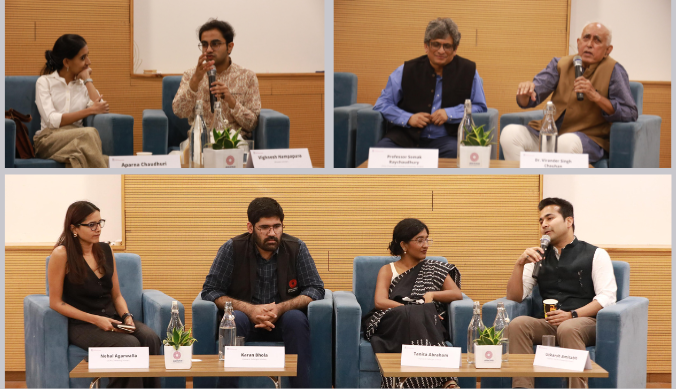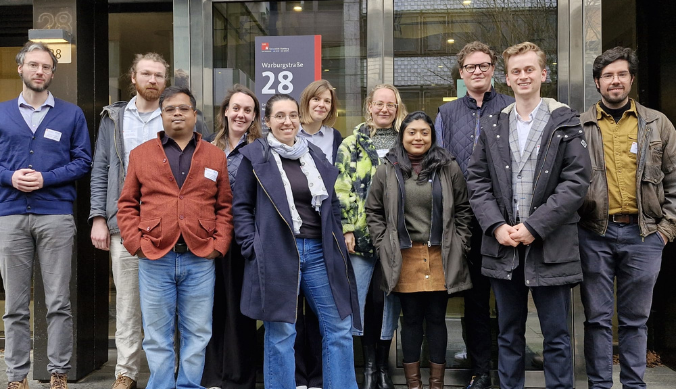The Novelty of Scientific Communication: Cosmos by Carl Sagan
The uniqueness of Cosmos stems from the writing of Carl Sagan who makes the usually intimidating presentation of scientific discoveries accessible to the general public through his dynamic explanations and the easy flow of topics that complement and support each other
“The Cosmos is all that is or ever was or ever will be.” Thus begins the first chapter of Cosmos by Carl Sagan, published in 1980. Cosmos seeks to trace the path of scientific knowledge from the very beginning—exploring themes related to the anthropological, astronomical, biological and historical origin of scientific thinking regarding the universe—all the while incorporating philosophy and contemporary references.
The uniqueness of Cosmos stems from the writing of Carl Sagan who makes the usually intimidating presentation of scientific discoveries accessible to the general public through his dynamic explanations and the easy flow of topics that complement and support each other.
Books like Cosmos bridge the gap between scientific knowledge and a common understanding of science by the public. It aims to educate non-specialists about cutting-edge scientific breakthroughs, igniting a greater public interest in and awareness of scientific subjects, shaping the beliefs and behaviours of individuals, influencing the development of public policies, and encouraging engagement with diverse communities to address critical societal issues. Prominent examples of science communication activities encompass science journalism, health communication and the rising popularity of interdisciplinary studies. Recognising that science bears political, ethical, and legal implications, science communication has a pivotal role in bridging divides among different stakeholders, in the realms of public policy, industry, and civil society.
Considering the example of Cosmos, we follow Sagan as he examines the need for exploration and the method of discovery that has been followed in the past versus our constant evolution of the present. Drawing parallels between past and present development, Sagan can theorise about future space developments and their implications. We follow spacecraft missions to different parts of space that inform us about the very little reach we have but are still well informed in consideration of our advancements. Sagan supports this by narrating about the Library of Ancient Alexandria and continues to provide historical inceptions from Egyptian hieroglyphics to the birth of different civilisations and their contribution to the discovery of the cosmos. This way of conveying information highlights that science communication is not restricted to only modern science but also the historical origins of it to understand its future implications, thus highlighting the interdisciplinary approach in science communication.
Cosmos feels like trekking around the Earth with Sagan as we navigate our journey by looking at the star’s positions. It is essentially a guided tour. The book has an accompanying television series, Cosmos: A Personal Voyage, released in 1980 serving as a turning point in scientific communication and demonstrating Sagan’s amazing capacity to make complex scientific ideas interesting and approachable to a broad audience. Carl Sagan is a renowned astrophysicist, cosmologist and science communicator. The series engaged a wide range of audiences by combining visually spectacular pictures, compelling storytelling, and enthusiastic narration by Sagan. This multimedia form of engagement makes science accessible to different audiences.
His idea of promoting inclusivity in science, especially regarding elaborate astrobiological explanations, involved him making personal anecdotes and examples that created a comprehensible environment for the audience to pay attention and learn by relating to their immediate surroundings.
Effective science communication has to combat misinformation due to the increase of the dissemination of pseudoscience with the influx of the Internet. One would also have to deal with a polarised audience—any major scientific discovery and its subsequent announcement is usually politically charged. This is seen in the ongoing race in space exploration and landing between countries. Finally, a spur to implementing science is also a challenge. Knowledge gained does not immediately result in meaningful action. So, science communication would need to work with different cultures, political opinions and false assumptions.
The innovative aspect of scientific communication is its capacity to democratise information, stimulate curiosity, and make the difficult understandable. Cosmos: A Personal Voyage by Carl Sagan is a classic illustration of how these ideas can be used to effectively engage audiences and make a lasting impression. Sagan’s legacy lives on, guiding modern science communicators as they take on new opportunities and difficulties in the dynamic field of scientific communication.
(Written by Harshini Dhiyaa Velsamy (UG’24), Ashoka University)
Study at Ashoka













